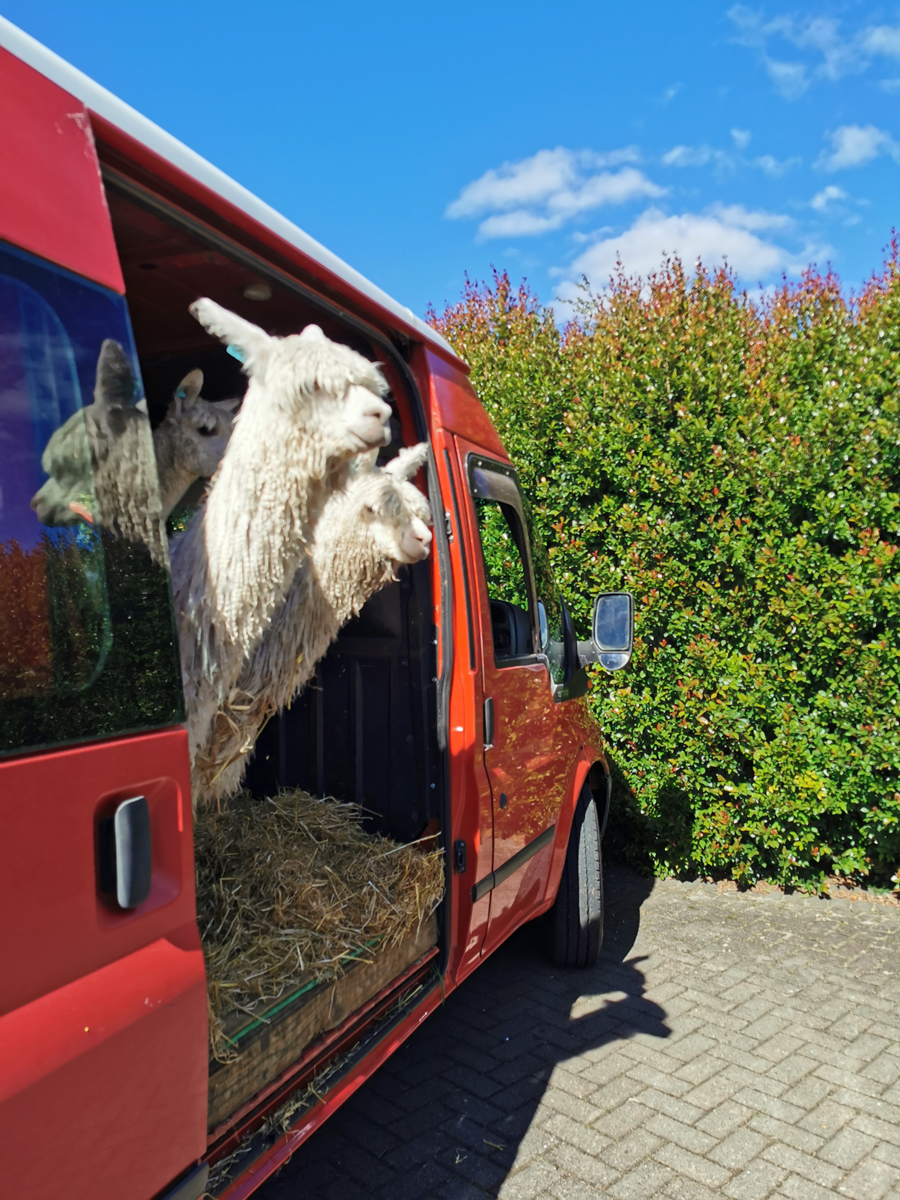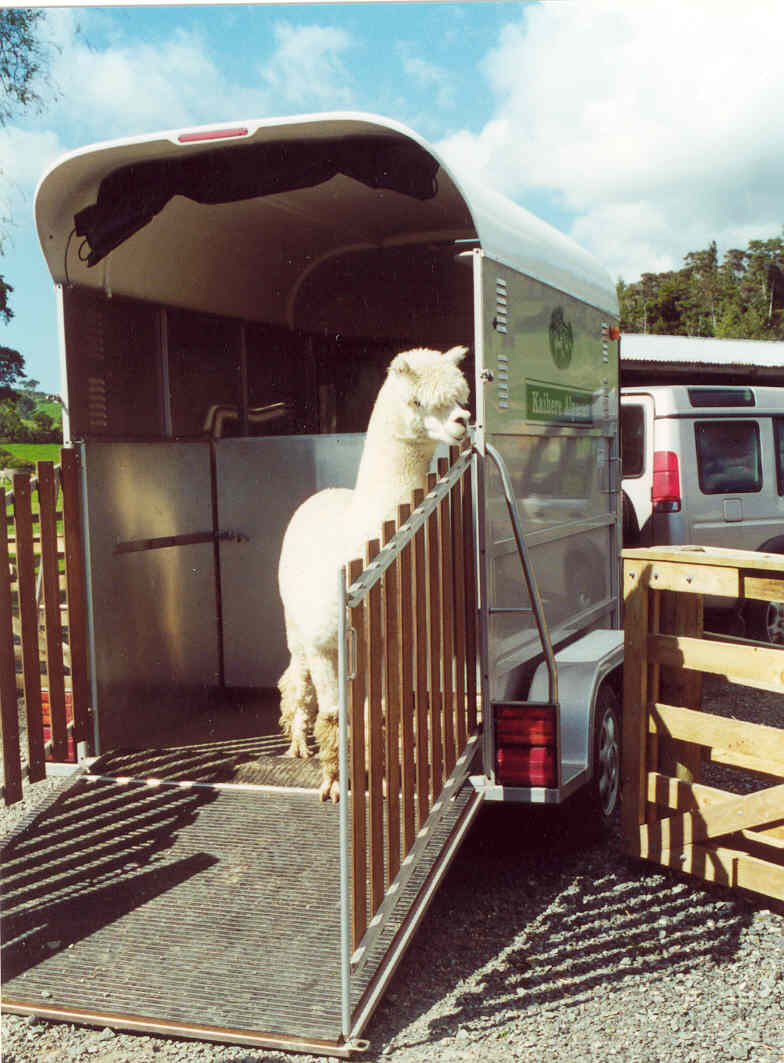More Suggestions:
In a van have a partition made between driver and animal sections. This can be plywood, or another strong material. A lining can also be attached to the bars at the side and front, which most vans have. The lining will cover floor, both sides and the front where the partition is, made of waterproof canvas. A piece of carpet or artificial grass can cover the floor to prevent skidding. Everything can be taken out for cleaning as well.
With horse floats have a canvas flap on the back covering the big space above the door/ramp. When renting a float, check if it has this feature, or attach a piece of plywood to make the door higher.
Single alpacas that are well trained and used to travelling are usually ok in any form of transport. But think on what happens to them if you have to break heavily, they may get thrown over, panic and can cause injury to themselves and you (if in same compartment). A single alpaca in a large float could be injured in a crash, as they become a projectile (“cud missile”!). This is also true for more animals in a very big space. By dividing a large horsefloat in smaller units they stay safer. “Seatbelts” are available for dogs and look like a harness. It is possible to do this with a trained alpaca, but I have never seen or tried it. We welcome any suggestions from our readers! I contacted one of the directors of the Association for the Advancement of Automotive Medicine, which deals with car safety, prevention of injury in crashes and the effect of impact on the human body in a crash. I was advised that, particularly in spaces made for bigger animals and too large for an alpaca, the physical trauma is not different to that in humans. Putting in partitions to decrease space was advised. Although no papers ever were presented on an animal crash scenario, the factors are naturally the same as putting a human in a horse float.
A smooth floor in vans, floats and trailers can be covered as described above to prevent skidding. Being able to keep their feet under them will also make the animals feel more secure and less scared.
Unloading. This can be a problem when they have to walk, but mostly jump, onto a slippery surface (smooth concrete, lino, very wet grass). I have seen alpacas jumping onto a slippery surface and make a head-on impact with a fencepost. This can cause injury to neck, jaw or nose (not the fence), but the fall can cause other damage as well. It is preventable when you think where and how to unload them. After sitting for a while in a moving object they may not as stable on their feet. Give them time to get out and adjust to standing still again. There are anti-skid paints available for in and outside use on concrete and other surfaces. It may assist you as well when walking on a wet day!
If your alpaca is halter trained, leave the halter on when travelling. In an emergency situation, it is easier to clip on the lead and control them. (Another good reason to train alpacas that have to travel!). But never tether an alpaca by its halter in a moving vehicle. They do have expensive necks.
Transport insurance for alpacas does exist, but I doubt it will cover inappropriate methods of transport. Who wants to find out anyway? Just drive safely and keep to the speed limit.




